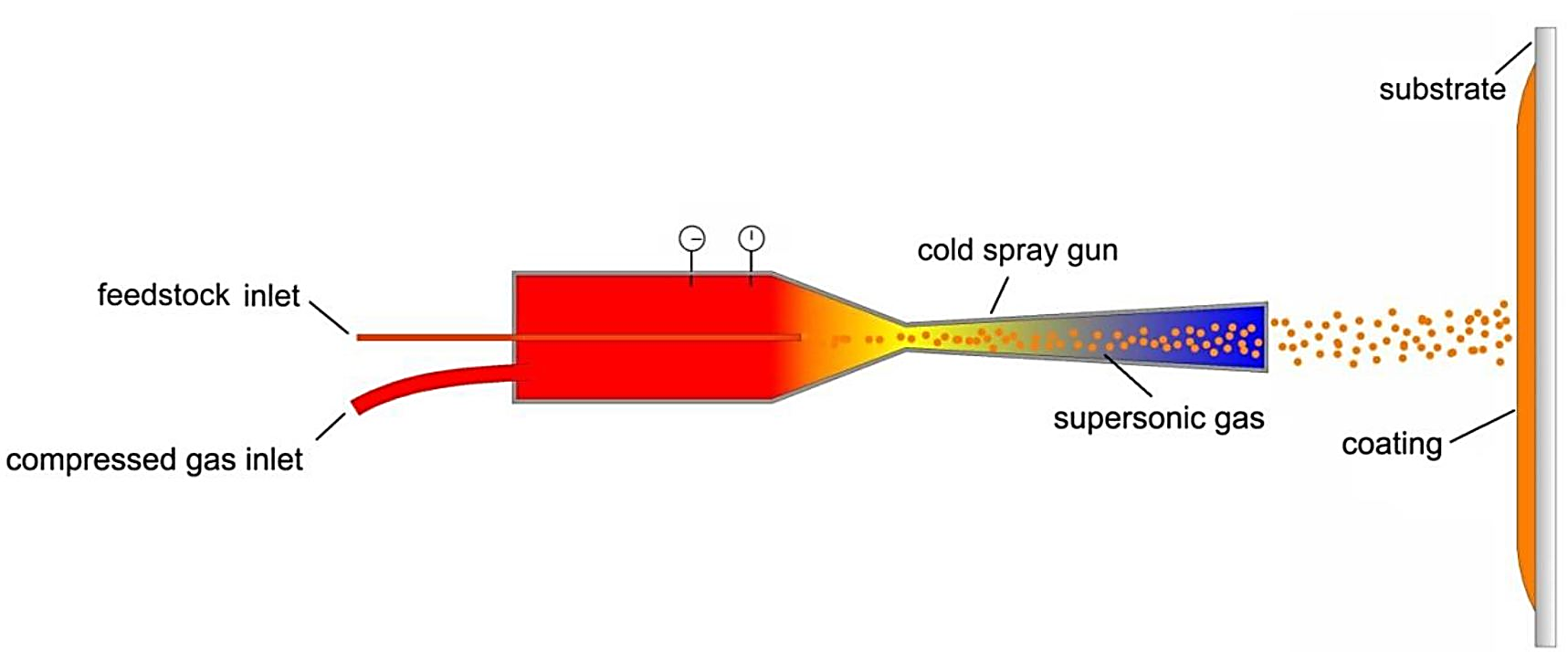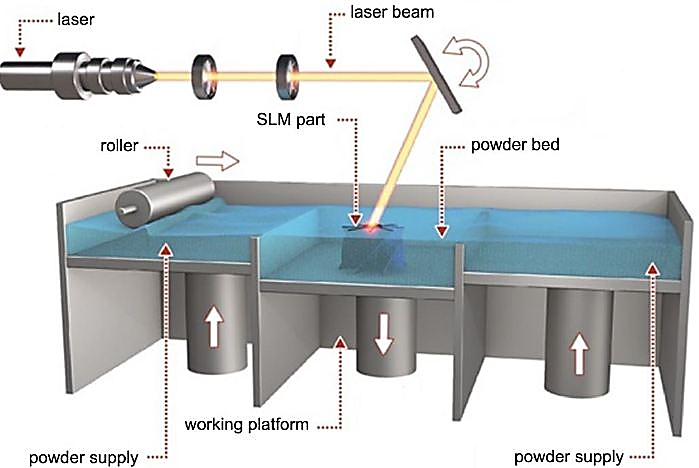Implementing Additive and Cold Spray Techniques for the smart manufacturing of valve components (IMPACT)
Description
The project focuses on the use of additive manufacturing processes for the fabrication of valve components. More specifically, the Cold Spray and the Selective Laser Melting (SLM) techniques are employed.
Cold Spray (CS) or Gas Dynamic Cold Spray (GDCS) is a solid state deposition method whose fundamental principle is the acceleration of powder particles to supersonic velocities until their final ballistic impingement on a substrate. The typical cold spray set-up comprises a feedstock inlet, a supply of compressed inert gas (typically nitrogen or helium), and a converging-diverging De Laval nozzle as presented in figure 1. The particles are carried by the gas stream created after the preheating of the pressurized gas, followed by its expansion to supersonic velocity. Subsequently, they impact on the substrate, converting in this manner their kinetic energy to local plastic deformation under adiabatic conditions. The resulted structures are characterized by high bond strength and low porosity.

The experimental set-up of the Cold Spray method
Selective Laser Melting (SLM) is an innovative additive manufacturing process which utilizes a high density laser in order to selectively melt regions of metal powder spread across the fabrication bead. The contour of the component is produced by redirecting the laser beam with a mirror deflection unit, according to the data of a Computer Aided Design (CAD) file. The process follows a layer by layer sequence by lowering the fabrication bed after the end of each cycle. The typical layer thickness ranges between 15 to 500 μm, while the fabrication cycles are implemented until the three dimensional geometry is created.
SLM enables the production of samples with complex geometries (e.g., turbine discs and cellular lightweight structures, metallic foams), while it allows the customization of products at acceptable cost, giving no material waste through recycling unprocessed powder. As a result, it is widely recognized as the manufacturing technology of the future.

The schematic representation of the SLM process
The project investigates the potential application of CS and SLM for the fabrication of valve components, aiming at the substitution or mitigation of the traditional-subtractive manufacturing techniques. The relevant optimization takes into consideration various criteria such as the specimen design, material selection, erosion resistance, mechanical performance, and the operational parameters of the experimentation.



